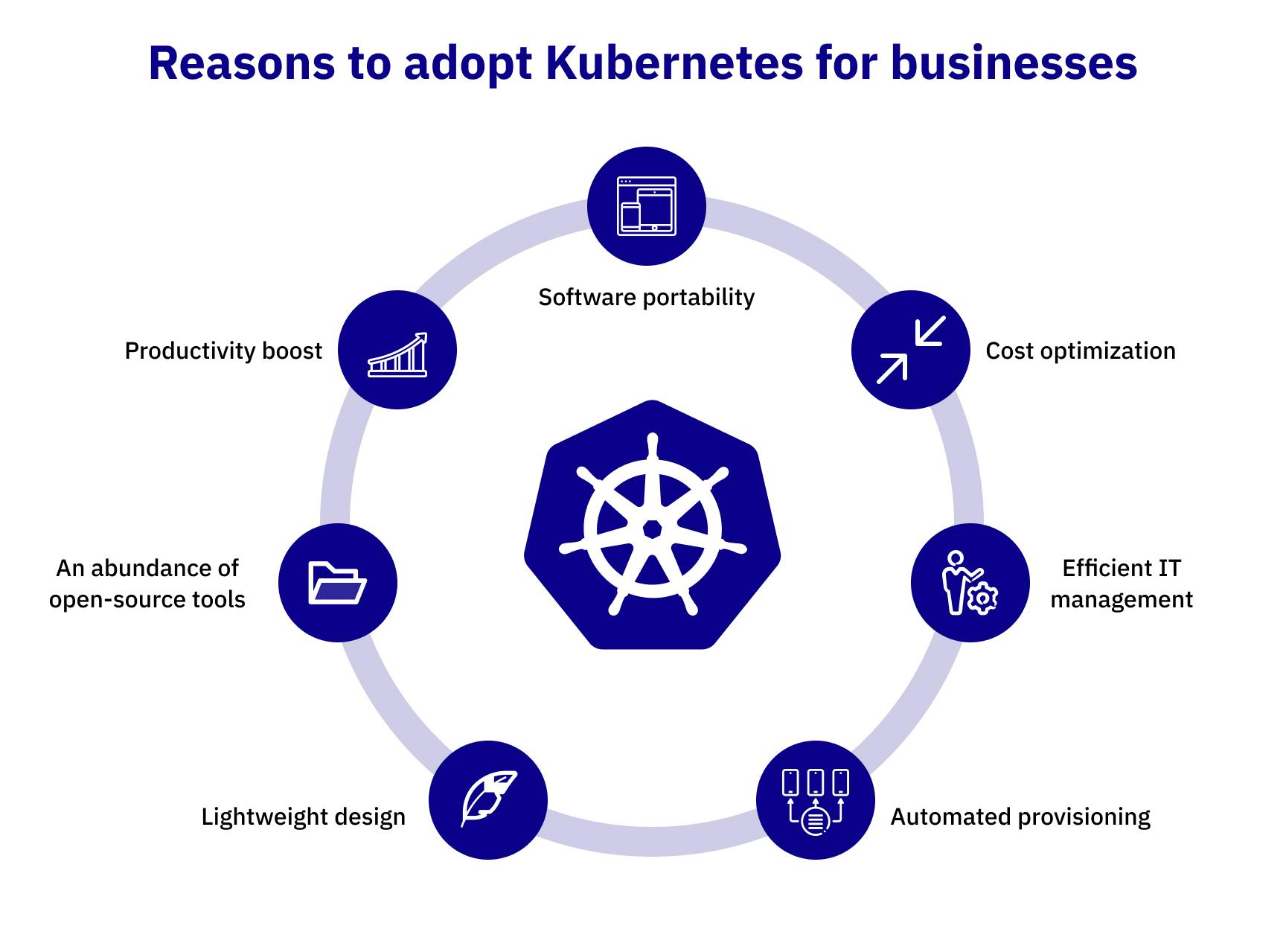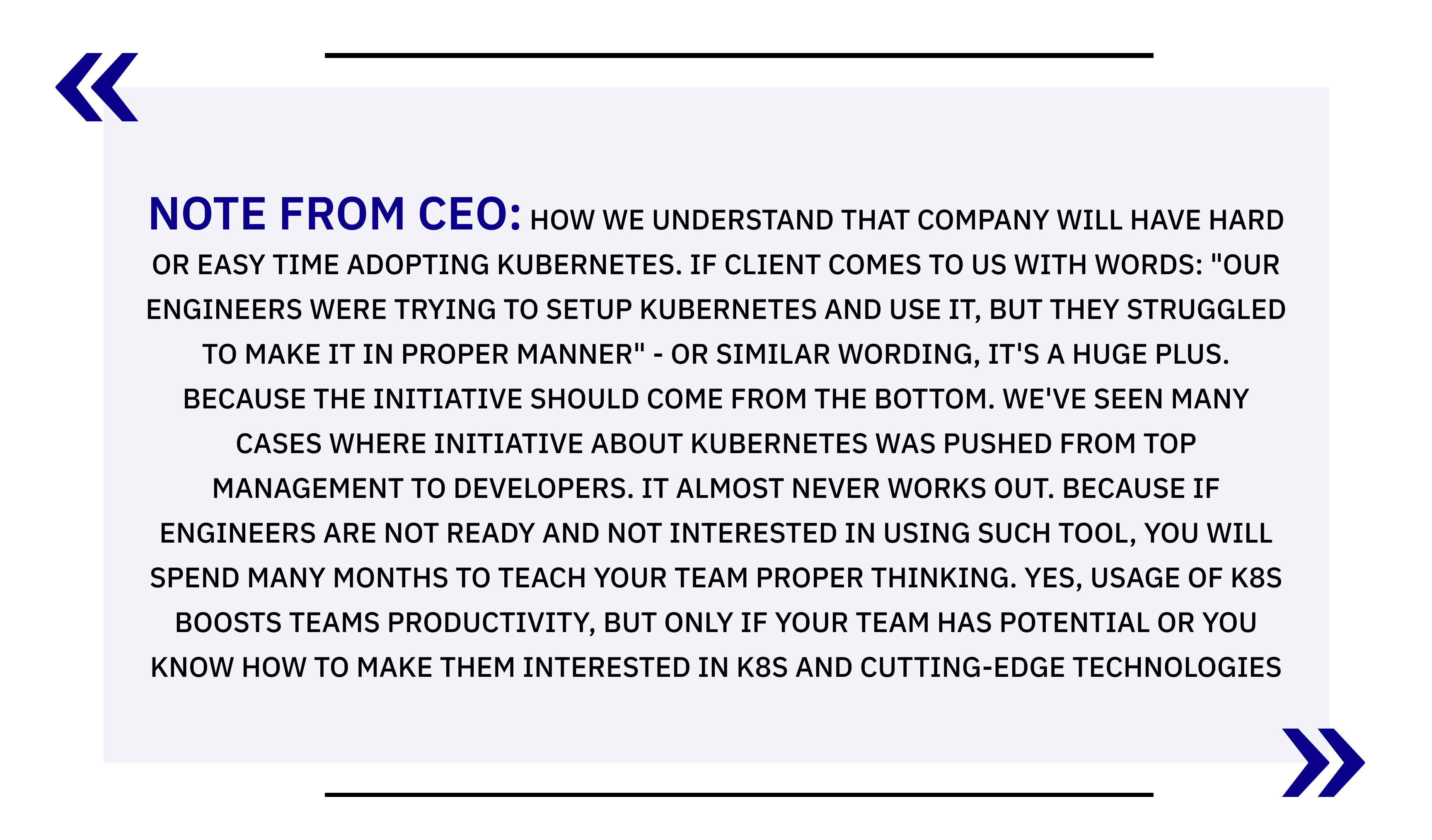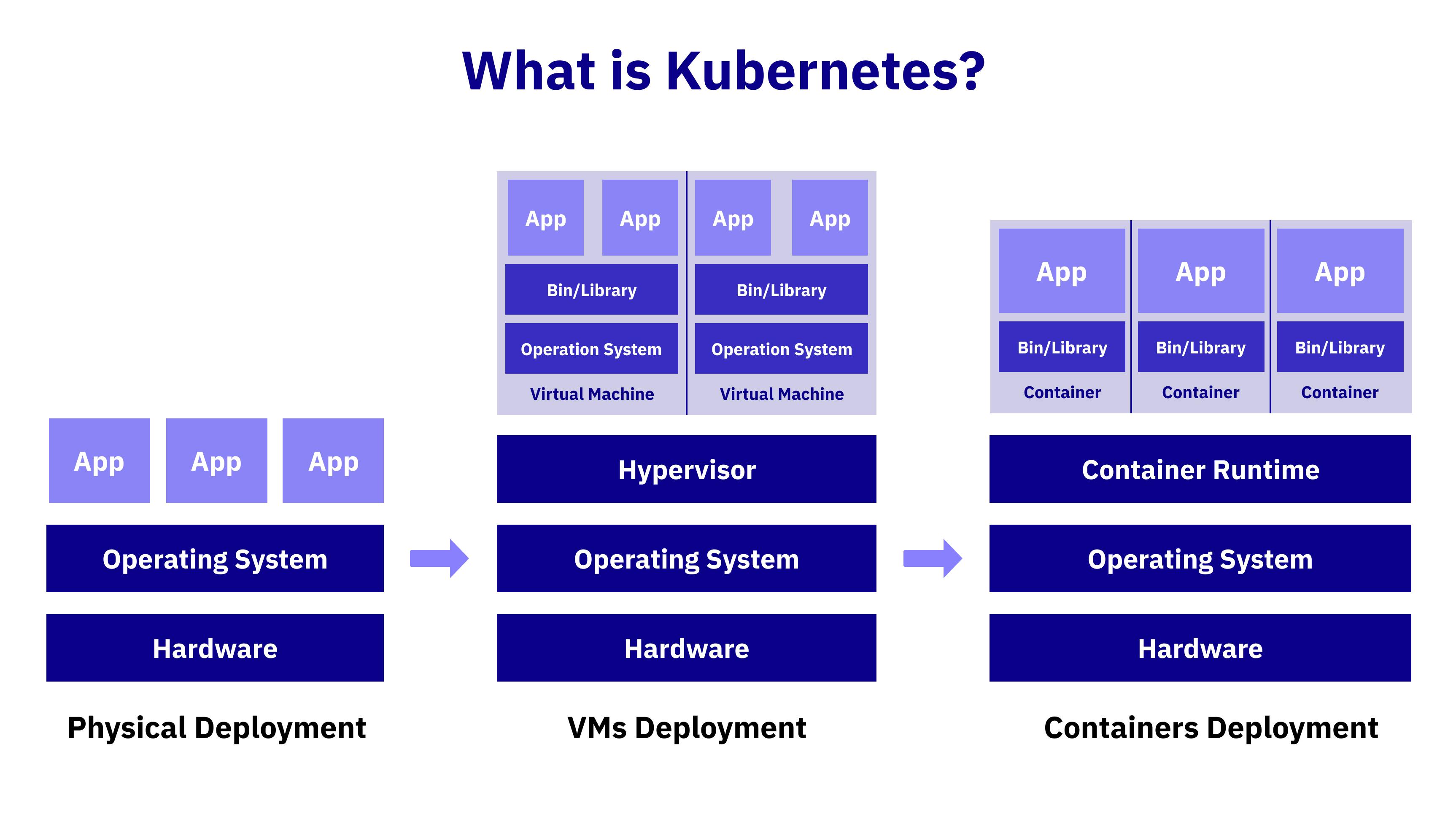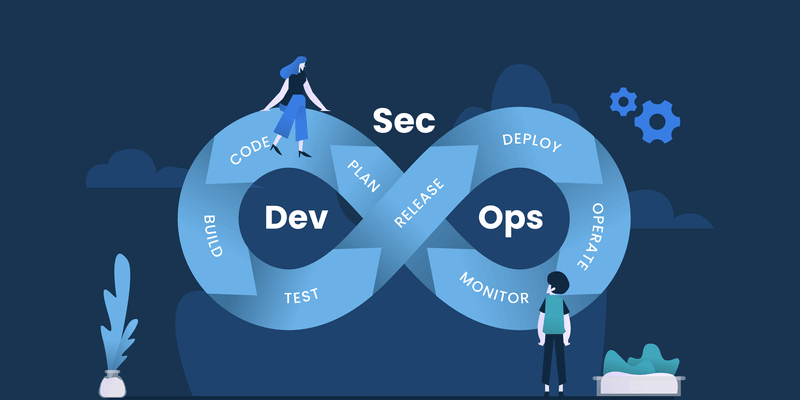To explain how Kubernetes container orchestration can make your IT environment scalable, efficient, and stable, let’s look at its capabilities and advantages.

1. Automated provisioning
The primary goal of Kubernetes is to automate deployment, updating, networking, and lifecycle management of your containerized systems. It selects the best server to host the containers and maintains the desired application states.
The platform also checks the stability of your systems and whether they’re performing efficiently. For instance, it can reboot, shut down, and roll applications back to previous iterations if they begin to negatively affect other applications. For the record, 80% of companies that used containers considered automated rollbacks that reduce application downtime a key benefit of using Kubernetes.
2. Efficient IT management
Kubernetes autoscaling allocates application workloads across nodes that make up your K8s cluster to optimize resource consumption. For example, if the traffic for a container is too high, the platform can redistribute the load to keep the deployment stable. This also allows your IT teams to manually adjust the CPU, memory, and storage for pods to reduce IT costs.
Enterprises often use Kubernetes to automate their IT infrastructure management using third-party extensions for container network, storage, and runtime interfaces. Consistent with this, in 2021 Portworx reported that 89% of enterprise adopters surveyed noted the expanding role of K8s in infrastructure management.
3. An abundance of open-source tools
Kubernetes has a vibrant community of over 3000 contributors and a growing open-source software ecosystem. You can find various usability, networking, and security tools to enhance your capabilities via the Kubernetes APIs.
4. Lightweight design
Instead of packing its own operating system (OS), containers run on a shared OS. Where a containerized application takes up mere megabytes, the same application on a VM can reach several gigabytes. This makes Kubernetes containers faster and allows porting them to any environment.
5. Software portability
What if you don't know where you might need to deploy your software over its lifecycle. But containerization makes your applications portable to any on-premise, cloud, or hybrid environment without significant refactoring. It also prevents your current infrastructure from being tied to a single cloud provider.
Even better, your containers behave the same way regardless of where you deploy them. You can choose the best environments for each container to keep the budget in check or to improve performance. For the record, 61% of adopters said that the ability to reuse code across environments was a primary reason for using K8s.
6. Productivity boost
As much as 73% of responders said that the top benefit of Kubernetes is the ability to deploy applications faster. About 85% of companies believed container orchestration improves their overall productivity. This may be because applications are broken into smaller, independent pieces, allowing multiple teams to work on specific features simultaneously.
Businesses adopt K8s to test machine learning algorithms in different computing environments. Nearly 84% of companies used it primarily to develop and test AI models.
Kubernetes’s rollback feature, automated deployment tools, and version control system make for an excellent pipeline to submit, test, and modify code. That's why platforms like Kubernetes are used by 64% of DevOps professionals who focus on continuous feedback and automation.

7. Cost optimization
About 81% of responders noted that container orchestration helped optimize resource usage and reduce IT costs. Additionally, the report said that over a quarter of respondents said K8s may help them shave off infrastructure management and staffing costs by 30% or more.
As you can see, Kubernetes offers substantial advantages that are relevant for larger organizations and small and medium-sized businesses (SMBs). But how complex is it to containerize your environment for K8s?










